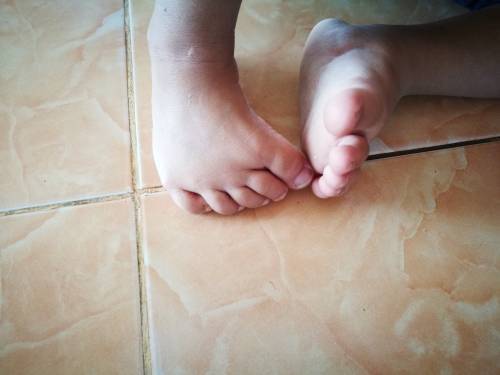Clubfoot is a common foot deformity that affects approximately 1 in every 1,000 live births worldwide.
It is characterized by a twisted foot, turned inward and downward, making it difficult to walk or even wear shoes. This condition affects people of all ages and races, but it is more common in certain parts of the world.
Causes and Symptoms
We do not know the exact cause of clubfoot, but we believe it to be a combination of genetic and environmental factors. Some studies have shown that clubfoot may be hereditary, with a higher incidence in families with a history of the condition. Other risk factors include maternal smoking during pregnancy and low amniotic fluid levels.
Clubfoot is usually diagnosed at birth, with visible symptoms such as a small, short foot that is twisted inward, pointing down and backwards. The calf muscles may also be underdeveloped, making it difficult to walk or stand on the affected foot. Children with clubfoot may experience difficulty wearing shoes or even require special footwear.
Treatment
Fortunately, clubfoot is a treatable condition, and early intervention can lead to successful outcomes. The most common treatment approach is the Ponseti method, which involves gentle manipulation and casting of the affected foot over several weeks. The medical team performs a minor outpatient procedure to lengthen the Achilles tendon after the initial casting, followed by utilizing a brace to maintain the corrected position.
In some cases, surgery may be necessary to correct the deformity. This may involve releasing the tight ligaments and tendons in the foot, followed by casting and bracing to maintain the corrected position. Doctors usually reserve surgery for cases that do not respond to non-surgical treatments.
Impact in Asia
Many parts of Asia face a significant health concern regarding clubfoot. This is especially so in low-income countries with limited access to healthcare and treatment. A study published in The Lancet Global Health in 2019 estimated that there are approximately 130,000 new cases of clubfoot in Asia each year. A global study found that Asians average 0.6 cases per 1000 live births. It is a lower prevalence than other ethnicities, but is still a relevant amount. The study also highlighted the need for improved access to affordable and effective treatment options for families affected by this condition.
Conclusion
Early intervention can successfully treat clubfoot, which is a common foot deformity. Researchers do not yet fully understand the cause of the condition. However, they believe that genetic and environmental factors play a role. The social and economic status of lesser-developed populations in Asia can make early intervention more challenging. Finally, improving access to healthcare and treatment options can ensure that children born with this condition can lead healthy and active lives.

